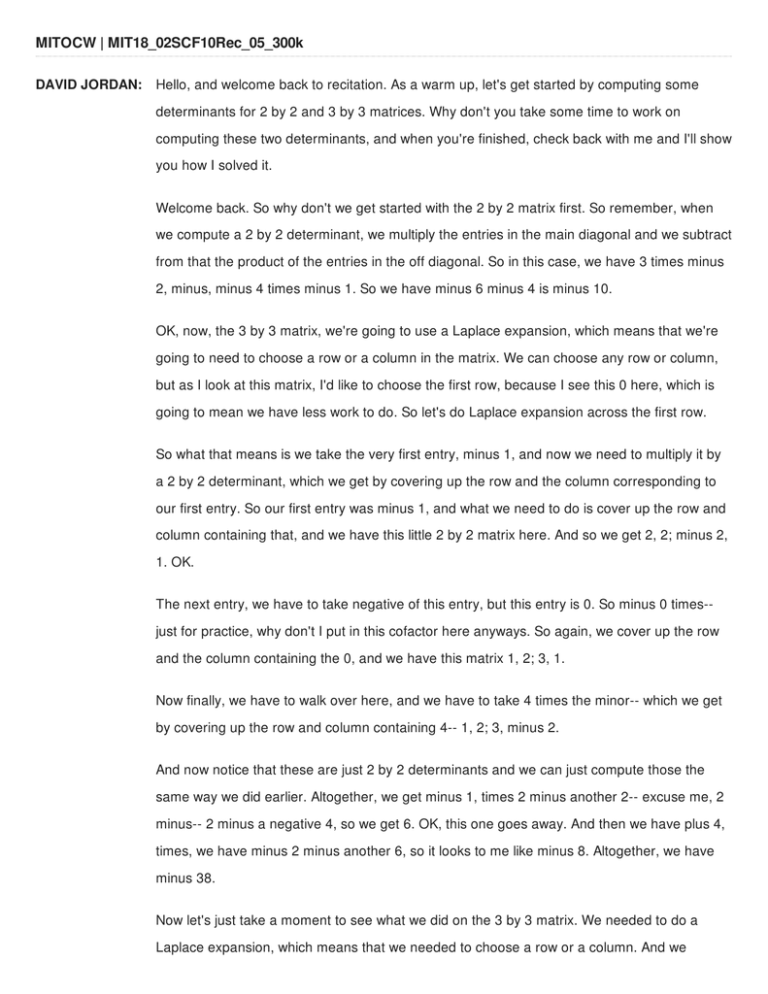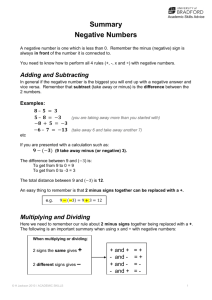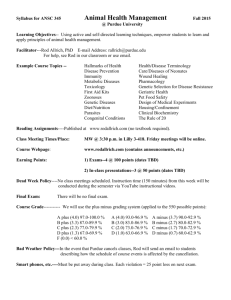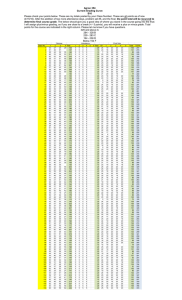MITOCW | MIT18_02SCF10Rec_05_300k
advertisement

MITOCW | MIT18_02SCF10Rec_05_300k DAVID JORDAN: Hello, and welcome back to recitation. As a warm up, let's get started by computing some determinants for 2 by 2 and 3 by 3 matrices. Why don't you take some time to work on computing these two determinants, and when you're finished, check back with me and I'll show you how I solved it. Welcome back. So why don't we get started with the 2 by 2 matrix first. So remember, when we compute a 2 by 2 determinant, we multiply the entries in the main diagonal and we subtract from that the product of the entries in the off diagonal. So in this case, we have 3 times minus 2, minus, minus 4 times minus 1. So we have minus 6 minus 4 is minus 10. OK, now, the 3 by 3 matrix, we're going to use a Laplace expansion, which means that we're going to need to choose a row or a column in the matrix. We can choose any row or column, but as I look at this matrix, I'd like to choose the first row, because I see this 0 here, which is going to mean we have less work to do. So let's do Laplace expansion across the first row. So what that means is we take the very first entry, minus 1, and now we need to multiply it by a 2 by 2 determinant, which we get by covering up the row and the column corresponding to our first entry. So our first entry was minus 1, and what we need to do is cover up the row and column containing that, and we have this little 2 by 2 matrix here. And so we get 2, 2; minus 2, 1. OK. The next entry, we have to take negative of this entry, but this entry is 0. So minus 0 times-just for practice, why don't I put in this cofactor here anyways. So again, we cover up the row and the column containing the 0, and we have this matrix 1, 2; 3, 1. Now finally, we have to walk over here, and we have to take 4 times the minor-- which we get by covering up the row and column containing 4-- 1, 2; 3, minus 2. And now notice that these are just 2 by 2 determinants and we can just compute those the same way we did earlier. Altogether, we get minus 1, times 2 minus another 2-- excuse me, 2 minus-- 2 minus a negative 4, so we get 6. OK, this one goes away. And then we have plus 4, times, we have minus 2 minus another 6, so it looks to me like minus 8. Altogether, we have minus 38. Now let's just take a moment to see what we did on the 3 by 3 matrix. We needed to do a Laplace expansion, which means that we needed to choose a row or a column. And we needed to take the entries of the row and add these up, multiplied by the cofactor matrix we got by covering up the row and column containing our highlighted entry. And we needed to do that alternating the signs. So we got minus 1 times this cofactor, minus 0 times this cofactor, and then finally, plus 4 times this cofactor. Altogether, we got minus 38. OK, I'll leave it at that. Thank you.





